Hip hop dance is more than just steps; it’s a vibrant culture with a rich history that continues to influence global trends. From its humble beginnings in the Bronx, New York, to its worldwide recognition today, hip hop dance has captured hearts and inspired generations.
For dancers and enthusiasts alike, understanding the roots and evolution of hip hop dance is crucial. It provides context, depth, and a greater appreciation for this dynamic art form. This guide will take you on a journey through the world of hip hop dance, covering its origins, key elements, diverse styles, and its impact on mainstream media.
In this article, we will delve into:
- Defining Hip Hop Dance: What it truly is.
- The Foundational 5 Elements of Hip Hop Culture.
- Tracing the History of Hip Hop Culture and Dance.
- Exploring Different Types of Hip Hop Dance Styles.
- The Influence of Mainstream Media on Hip Hop Dance.
- Finding and Understanding Hip Hop Dance Classes.
If you’re eager to do more than just read about it and want to start dancing now, explore our Beginner Hip Hop dance program online. Learn directly from Buddha Stretch, a hip hop legend, who will guide you through the history and fundamental moves of hip hop, step-by-step.
Let’s get started and explore the world of hip hop dance!
What Exactly is Hip Hop Dance?
Hip hop dance is a dynamic and expressive dance style characterized by rhythmic movements, bounces, and rocks, all performed to hip hop music. Born in the African American and Latino communities of 1970s New York City, it is deeply rooted in social and historical contexts. It’s crucial to understand that hip hop dance isn’t just an isolated dance form; it’s an integral part of a larger hip hop culture. This culture encompasses five core elements: Deejaying, Graffiti, Emceeing, Breaking, and Knowledge.
The 5 Essential Elements of Hip Hop
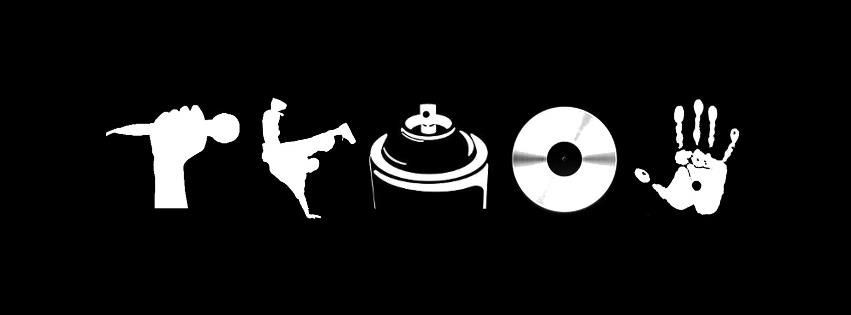 graphic showing the 5 elements of hip hop
graphic showing the 5 elements of hip hop
The Five Elements of Hip Hop Culture: Deejaying, Emceeing, Graffiti, Breaking, and Knowledge.
1. Deejaying (Turntablism)
Deejaying, also known as turntablism, is the art of creating music in real-time using record players and DJ mixers. Hip hop DJs are the musical architects of the culture, crafting the soundscapes that fuel dancers and parties. They are responsible for selecting, mixing, and manipulating records to create a continuous flow of music that keeps the energy alive on the dance floor.
2. Emceeing (MCing)
MC stands for “Master of Ceremonies.” In hip hop, the MC is the energizer and narrator, often called the “hype-man” for the DJ. MCs engage the crowd, keeping the energy high, and frequently improvise rhymes (freestyle rap) over the DJ’s music. They are the vocal storytellers of hip hop culture, adding lyrical layers to the music and atmosphere.
3. Graffiti Art
Graffiti in hip hop culture is a powerful form of visual expression. It’s the art of using spray paint to depict thoughts, feelings, and observations about daily life on public surfaces, like walls and buildings. Graffiti is a visual voice of hip hop, transforming urban landscapes into canvases of self-expression and social commentary.
4. Breaking (Breakdancing)
Breaking, often popularized as “breakdancing” by the media, is the original dance form of hip hop culture. It’s a dynamic and acrobatic style characterized by four foundational movements: Top Rocks, Footwork (also known as “Downrocks”), Freezes, and Power Moves. Breaking is the physical embodiment of hip hop energy, showcasing athleticism, creativity, and competitive spirit.
5. Knowledge
Knowledge is the unifying element that binds the other four together. Within hip hop culture, “knowledge of self” is a crucial concept, drawing from Afro-diasporic spiritual and political consciousness. It’s about empowering marginalized communities, promoting social change, and giving back to the community. Knowledge provides the intellectual and spiritual foundation of hip hop, giving purpose and meaning to its artistic expressions.
While some hip hop pioneers might include other elements like beatboxing, these five are universally recognized as the core pillars of authentic hip hop culture. To truly participate in hip hop is to engage with these five elements.
The Historical Journey of Hip Hop Culture
The 1970s Bronx was a challenging environment for young people. Overwhelmed by poverty, crime, gang violence, and drug issues, the youth, particularly African American and Latino minorities, felt ignored and underserved by mainstream society.
In response to these harsh realities, and seeking an outlet from their daily struggles, these young people innovated their own forms of art and expression.
These art forms became more than just hobbies; they shaped a lifestyle, influencing how they dressed, spoke, moved, and interacted with the world. This encompassing lifestyle and culture became known as Hip Hop.
KRS-One, a legendary hip hop artist, breaks down the meaning of “Hip Hop”: “Hip” means “present,” and “Hop” means “action.” Therefore, hip hop signifies a movement of present action, a constant state of learning, growth, and evolution.
Despite the adversities of the South Bronx, hip hop provided a positive and creative channel for energy. Instead of succumbing to negativity, hip hop heads channeled their energy into values like originality, creativity, identity, respect, and community.
Hip hop became a way of life, similar to how religious, ethnic, or familial backgrounds shape identity. Deejaying, Emceeing, Breaking, Dancing, and Graffiti were not mere pastimes; they were sanctuaries for self-expression and community building.
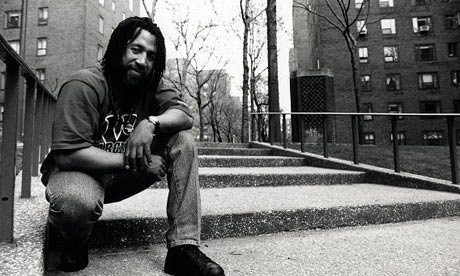 hip hop dj kool herc posing
hip hop dj kool herc posing
DJ Kool Herc, the “Father of Hip Hop,” at a block party. Photo by The Guardian.
DJ Kool Herc, known as the “Father of Hip Hop,” initiated these cultural shifts with his block parties in the West Bronx, the recognized “birthplace of Hip Hop.” He provided the music, and the community gathered to socialize and, most importantly, dance. The address “1520 Sedgwick Avenue” is iconic because it marks the building where many of these foundational parties occurred.
Observing the crowd’s energy at these parties, Kool Herc noticed that dancers became most animated during the “breakbeat” sections of songs. Breakbeats are the instrumental, percussive segments found in funk and R&B records. Understanding his role as a DJ to maintain high energy, Herc innovated a technique to extend these breakbeats. He isolated them and used two turntables to loop them continuously, creating extended dance breaks.
Grandmaster Flash further revolutionized DJing by using headphones to precisely locate the start and end points of beats. This “precueing” technique allowed for seamless transitions between breaks (Price 156), enhancing the flow and energy of the music.
Simultaneously, the Master of Ceremonies, or MC, emerged to hype up both the DJ and the crowd, further amplifying the energy and atmosphere. By the late 1970s, DJs and MCs were collaborating regularly, performing for their communities, and innovating the art of mixing, scratching, and cutting records.
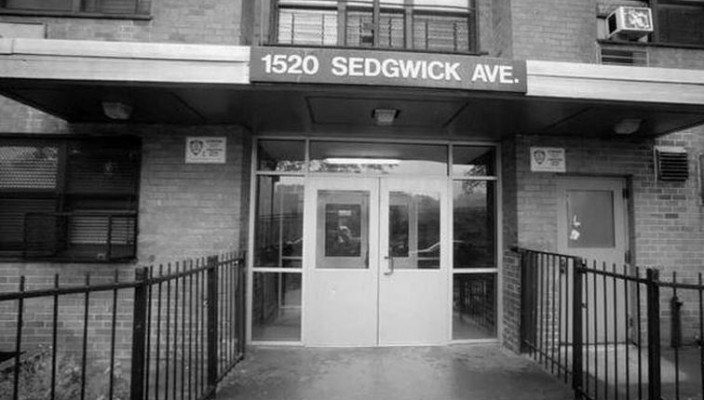 front of 1520 sedgwick ave. building
front of 1520 sedgwick ave. building
1520 Sedgwick Avenue, Bronx, New York City: The Birthplace of Hip Hop. Photo by Voices of East Anglia.
Despite the evolution of hip hop’s artistic forms over decades, the core principles of the culture have remained constant. Building on this understanding of hip hop culture’s history, let’s explore the primary styles within hip hop dance: Breaking and Party Dances.
Exploring Different Styles of Hip Hop Dance
Breaking: The Original Hip Hop Dance
Breaking, often referred to as “breakdancing” in mainstream media, originated directly from these hip hop block parties. It is an athletic and dynamic dance style that evolved into friendly competitions and displays of skill and originality among dancers.
DJ Kool Herc himself coined the terms “b-boys” (break-boys) and “b-girls” (break-girls) for these dancers because they danced during his breakbeats.
The fundamental techniques of breaking include top rocks (upright movements), footwork (intricate steps performed on the floor), freezes (stylized poses held in place), and power moves (acrobatic and momentum-based movements).
Both footwork and toprock demand spatial awareness, improvisation, and the ability to infuse every movement with personal style and originality (Rajakumar 19).
Early b-boys and b-girls drew inspiration from diverse movement backgrounds. They incorporated elements from Salsa, Cuban Mambo and Rumba, Brazilian Samba, Jazz dance, and martial arts such as Kung-Fu and Capoeira, enriching the vocabulary of Breaking.
Breaking battles became platforms to showcase athleticism, attitude, originality, and dominance in a non-violent way. Through these dance battles, participants gained respect, pride, a sense of identity, and purpose, channeling their competitive energies into dance rather than violence.
Hip Hop Party Dances: Social and Fun
While Breaking was gaining momentum, not everyone was drawn to its demanding athleticism or competitive nature. As hip hop music diversified, so did the dance styles. People started moving in new ways – styles that were more social, relaxed, and focused on fun.
With pioneers like Buddha Stretch, Hip Hop party dances emerged. These social dances are designed for group participation and enjoyment.
Examples of these classic party dance moves include the Snake, Chicken Head, Cabbage Patch, Harlem Shake, and Running Man.
As hip hop dance grew, numerous clubs emerged in New York City, notably Latin Quarters and Union Square, becoming hubs for these social dance styles. The dances originating from this era are often what people envision when they think of “old school hip hop” dance.
The late 1990s and early 2000s brought further evolution in hip hop music, with new instruments and rap styles influencing dance. This era gave rise to “new school” party dances like the Whip, Nae Nae, Dougie, and Cat Daddy (Brandon Allen Juezan).
You can even learn many of these hip hop party dance moves on STEEZY Studio! Learning individual moves can be a fun and accessible entry point into hip hop dance. Start learning for free here.
Clarifying Misconceptions: Beyond Hip Hop “Umbrella” Styles
Styles like Popping, Locking, House, and Whacking are frequently, but incorrectly, categorized under the “hip hop umbrella.” While they are street dance styles and share some historical context, they are distinct dance forms with their own techniques, vocabularies, and origins, separate from hip hop dance itself.
Social dances that developed in the 1980s, such as Locking and Popping, are more accurately classified as “West Coast Funk” styles. Recognizing these distinctions is important for understanding the diverse landscape of street dance.
Hip Hop Dance in Mainstream Media
Hip hop began to gain media attention in the early 1980s. Films like Wild Style, Style Wars, Beat Street, and Breakin’ played a significant role in introducing Breaking and street dance culture to a wider global audience.
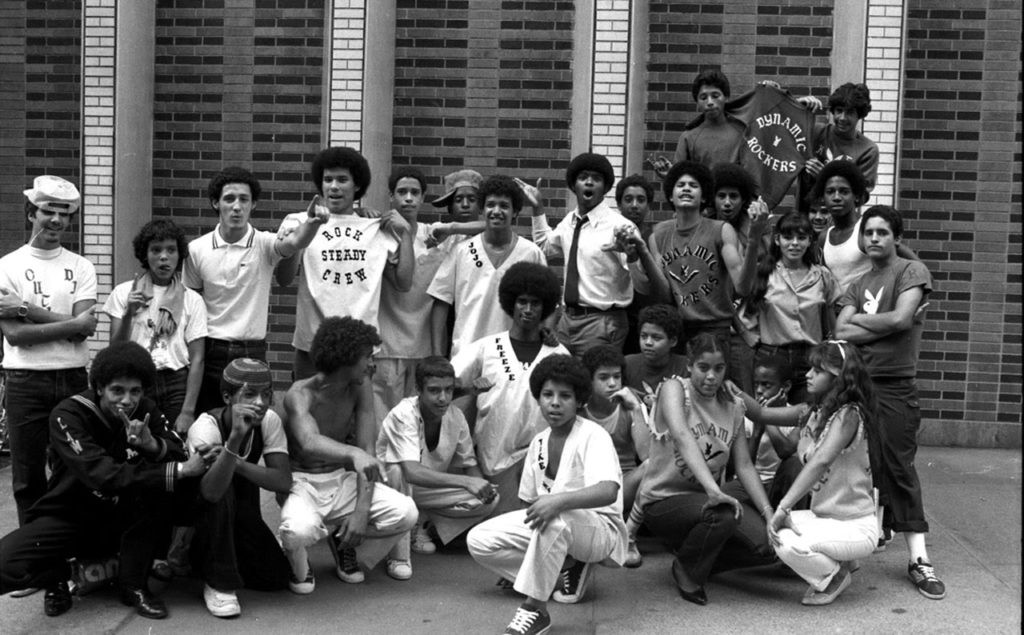 elite force dance crew
elite force dance crew
Elite Force dance crew, pioneers of hip hop choreography and performance.
In 1981, a landmark battle between the Rock Steady Crew and the Dynamic Rockers at the Lincoln Center garnered national attention. It was covered by major New York publications and even featured in National Geographic.
The movie Flashdance (1983) included cameo performances by members of Rock Steady Crew (Crazy Legs, Ken Swift, Frosty Freeze, and Mr. Freeze), further exposing breaking to a mainstream audience.
Graffiti Rock, though short-lived, was a television show that attempted to integrate all the foundational elements of hip hop. As Rajakumar notes, it is still “remembered as one of the pioneers of hip hop culture” (35).
Soul Train, created by Don Cornelius in the 1970s, also contributed to popularizing hip hop social dancing, alongside Popping, Locking, and other street dance styles.
Breakers began to appear in commercials for major brands like Burger King, Pepsi, Coke, and Panasonic, as well as on talk shows, news programs, and even the 1984 Summer Olympics.
Charles “Cholly” Atkins and James Brown were influential figures who popularized dance moves that later shaped hip hop generations (Durden).
Elite Force, a 1990s dance crew, comprised hip hop artists who also worked as professional dancers, bridging underground hip hop with the professional dance world.
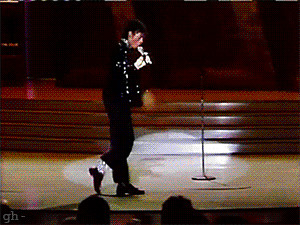 michael jackson doing the backslide
michael jackson doing the backslide
Michael Jackson performing the backslide (moonwalk), a move influenced by street dance styles.
While these developments provided exposure and opportunities for hip hop dancers, the portrayal of hip hop style and culture in mainstream media often became diluted and commercialized for mass appeal.
As Rajakumar points out, “Critics now find flaws in the films as examples of the early commercialization of breakdancing diluting the intensity of the socioeconomic roots of the origins of breakdancing and hip hop culture – part athletic creativity and part struggle for meaning in the midst of poverty and social alienation” (38).
Balancing authenticity with mass market appeal is a challenge. Many dance and fitness studios use “Hip Hop” to label classes that lack the foundational grooves and cultural context of true hip hop. This misuse has led to the misconception that any choreography performed to hip hop, rap, or R&B music is automatically “hip hop dance.”
Modern shows like America’s Best Dance Crew, Dancing With The Stars, So You Think You Can Dance, and movies such as Save The Last Dance, You Got Served, and the Step Up series further popularized street dance movements to younger audiences. However, they often presented underground hip hop culture in a screen-friendly, packaged format, sometimes missing the deeper cultural nuances.
Today, numerous dance organizations and community groups worldwide are dedicated to counteracting this appropriation by authentically practicing, teaching, and preserving hip hop culture in its purest form.
View this post on Instagram
A post shared by Versa-Style Dance Company (@versastylela)
Finding Authentic Hip Hop Dance Classes
Finding truly authentic hip hop dance classes can be challenging, especially in areas where the culture hasn’t deeply rooted. However, even while searching for local classes, you can begin your journey by expanding your knowledge – remember, knowledge is a core element of hip hop!
We recommend starting your training by building foundational dance skills. Our article, “How To Dance Hip Hop For Beginners,” is a great starting point. For a more comprehensive guide before taking any street style class, read “How To Start Dancing,” which covers everything from freestyling to community engagement.
Now, let’s discuss how to effectively find good hip hop classes near you:
- Start with a Simple Google Search: Search for “Hip Hop dance classes near me” and review dance studios or events with positive reviews.
- Explore Social Media: Check out studios’ social media profiles (Instagram, YouTube, and Facebook are often informative) to get a visual sense of their classes and teaching style.
- Visit Studio Websites: Explore studio websites for detailed class descriptions, instructor bios, and their approach to hip hop dance.
When researching, look for these key indicators of authentic hip hop classes:
- Classic Hip Hop Moves: Do they mention or showcase classic hip hop moves on their website or in videos?
- Cultural Language: Do they use terms like “bounces and rocks,” “old school,” or “new school” hip hop?
- Instructor Background: Research the instructors. Do they seem connected to the broader hip hop community? Do they discuss hip hop culture and history, similar to this article, or focus solely on commercial aspects?
Use your best judgment to assess the authenticity and approach of the classes.
If local hip hop dance classes are unavailable, or if you prefer to learn from home, STEEZY Studio offers a wide range of authentically taught hip hop classes and programs.
Our Beginner Hip Hop program is led by OG hip hop dancer Buddha Stretch. He provides step-by-step guidance through rhythm, technique, performance skills, and the cultural context of hip hop. Click here to start the Beginner Hip Hop Program on STEEZY.
For shorter, focused lessons, check out our FREE classes with Brandon Beastboi Juezan!. These classes cover classic hip hop moves and popular new school party dances.
For intermediate to advanced dancers seeking personal expression within hip hop, explore these 5 tips on finding your own flavor in hip hop dance.
Regarding choreography, while Open Style Choreography (previously known as Urban Dance) is not strictly hip hop dance, it does draw influence and movements from hip hop and street styles. If choreography is your primary interest, STEEZY offers a dedicated category for this style. Explore our Open Style Choreography classes here, and learn more about the distinctions between “Urban Dance” and Hip Hop here.
The Significance of Hip Hop Dance
At STEEZY, as dance educators deeply connected to dance culture, we are committed to preserving and accurately sharing information, especially with the next generation of dancers.
Across all our style programs on STEEZY Studio, including:
Slim Boogie’s Beginner Popping Program
Jojo Diggs’ Beginner House Program
Lorena Valenzuela’s Beginner Whacking Program
Tango Leadaz’ Beginner Dancehall Program
Mr. YouTube’s Beginner Lite Feet Program
Bboy Machine’s Beginner Breaking Program
We prioritize:
- Collaborating with Respected Culture Ambassadors: Working with dancers and teachers who are deeply respected within their respective dance cultures.
- Integrating History into Dance Education: Teaching the history alongside the moves, recognizing that the movements are born from the history and cultural context.
Explore STEEZY now to try our Hip Hop classes from home and learn from authentic educators within the hip hop community.
This article is a starting point, and the story of hip hop dance is vast and multifaceted, filled with personal narratives and ongoing discoveries. Capturing every detail is a continuous journey.
This is an invitation to dialogue. If you have insights, disagreements, additions, or questions, please reach out. We are all learning and evolving together in this vibrant culture.
Sources:
Hip Hop, by Christopher A. Miller and Rebecca A Ferrell
Hip Hop Culture, Emmett G. Price III, Santa Barbara, CA: ABC-CLIO 2006
Hip Hop Dance, Mohanalakshmi Rajakumar
Underground Dance Masters: Final History Of A Forgotten Era, Thomas Guzman-Sanchez
Hip-Hop Dance in Context Jazz Dance: A History of the Roots and Branches E. Moncell Durden
